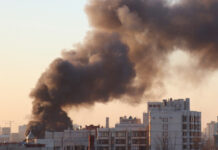
In this scenario you are the editor of news website. A duty editor adds an image to a news story that you feel it is too graphic.
Overnight news breaks of fighting in a foreign land. Raw footage is filed showing dead bodies.
Your duty editor takes a screen grab from the video for an image to use at the top of the story. The image shows a dead man. His clothing is distinctive. You can see the man’s face.
The picture is dramatic but also shocking. Do you:
- Use the image as a strong illustration of the story about what is taking place.
- Try to find another image that is less graphic and doesn’t show the man’s face.
- Edit out his features using a photo editor and publish.
Suggested action
It would be best to try to find another image that is less graphic and doesn’t show the man’s face.
We always need to consider carefully the editorial justification for portraying graphic material of human suffering, distress, and death.
There are almost no circumstances in which it is justified to show executions and very few circumstances in which it is justified to broadcast other scenes in which people are being killed.
We should also avoid the gratuitous use of close ups of faces and serious injuries or other violent material.
We must also be global in our news values. If we have editorial rules that state that we don’t publish details of someone who has been killed until the family has been notified, then that rule has to be applied globally.
Those in the West who apply such rules to domestic coverage need to ensure that they are consistent when dealing with tragedies in far-flung countries.
The family of a dead person, who can clearly be identified, but who is the victim of a killing thousands of miles away, are entitled to the same editorial standards we apply when the incident is on our door step.

This scenario presents a complex ethical dilemma that demands a nuanced response, going beyond a simple “right” or “wrong” answer. Let’s delve deeper into the considerations:
Understanding the core conflict:
The heart of the issue is the tension between:
- The public’s right to know vs. respect for human dignity: The public has a right to be informed about significant events, including the harsh realities of conflict. However, this right must be balanced against the fundamental respect for human dignity, particularly in death.
- The power of visuals vs. potential for harm: Graphic images can powerfully convey the gravity of a situation, but they can also cause immense distress, desensitise viewers, and potentially incite further violence.
- Global editorial standards vs. perceived distance: The principle of treating all individuals with equal respect, regardless of geographical location, is paramount. However, the perceived distance from a conflict can sometimes lead to a diminished sense of empathy and a willingness to publish more graphic content.
Analysing the options:
- Use the image as a strong illustration:
- Potential impact: This option priorities immediacy and impact. It could draw significant attention to the conflict and potentially galvanise public action.
- Ethical concerns: This option disregards the dignity of the deceased and the potential trauma it could inflict on viewers, particularly family and friends. It also risks violating the principle of notifying families before publishing images of the deceased. It can also cause a desensitising effect on the audience, and lower the value of human life.
- Try to find another image that is less graphic:
- Potential impact: This option strikes a balance between informing the public and respecting human dignity. It allows for the conveyance of the severity of the situation without gratuitous violence.
- Ethical considerations: This option acknowledges the importance of responsible reporting and minimises the potential for harm. It aligns with the principle of considering the impact on the deceased’s family.
- Edit out his features using a photo editor:
- Potential impact: This option attempts to mitigate the graphic nature of the image while still using it.
- Ethical considerations: This option is problematic. It is a form of manipulation that could be seen as disrespectful and deceptive. It also does not solve the core issue of showing a deceased person. Also, in the modern age, with advanced technology, it is very possible that the image could be restored, and the identity of the victim exposed.
Why option 2 Is the most ethical choice:
- Respect for human dignity: It prioritises the inherent worth of the deceased and avoids the exploitation of their image.
- Minimising harm: It recognises the potential for trauma and distress and seeks to mitigate it.
- Upholding global standards: It reinforces the principle of consistent ethical standards, regardless of geographical location.
- Maintaining credibility: Responsible reporting builds trust with the audience and enhances the credibility of the media organisation.
Adding depth and value:
- Contextualisation: Instead of relying solely on graphic images, the news organisation should provide in-depth reporting that contextualises the conflict, explaining its causes, consequences, and the human cost.
- Alternative storytelling: Employing alternative storytelling methods, such as eyewitness accounts, audio reports, and data visualisations, can effectively convey the gravity of the situation without resorting to graphic images.
- Transparency and accountability: The news organisation should be transparent about its editorial decisions and be accountable for the impact of its reporting.
- Long-term impact: The news organisation should consider the long-term impact of its reporting on the affected communities and strive to promote peace and reconciliation.
- Mental health awareness: News organisations should be aware of the mental health impact that graphic images can have on their own staff, and provide support.
In conclusion, while the desire to inform the public is essential, it must be tempered by a deep respect for human dignity and a commitment to responsible reporting. Option 2 represents the most ethical and responsible course of action, allowing the news organisation to fulfil its duty to inform while minimising harm.








